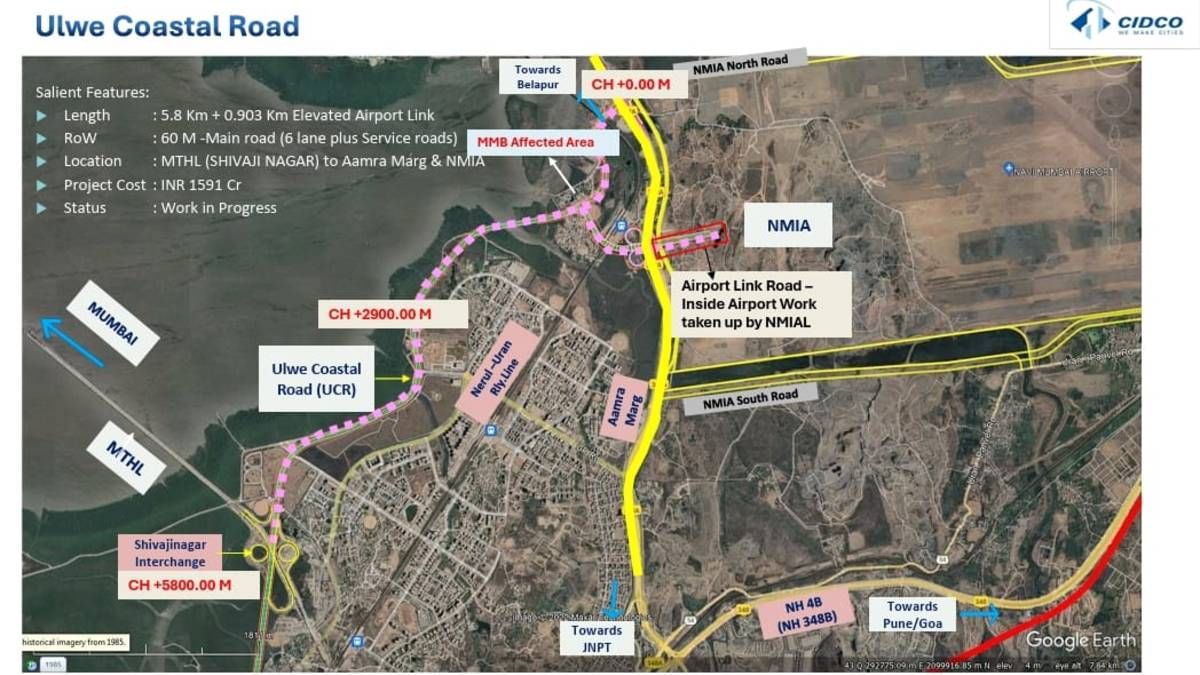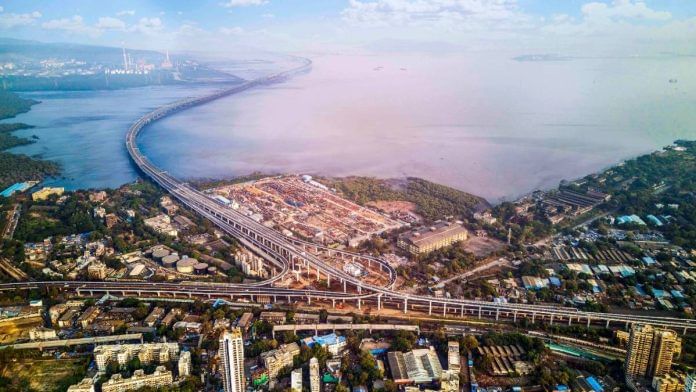Navi Mumbai: With the Navi Mumbai International Airport (NMIA) expected to begin operations this December, the City and Industrial Development Corporation (CIDCO) is focusing on completing the Ulwe Coastal Road, a key project that will provide last-mile connectivity to the new airport from Mumbai Trans Harbour Link (MTHL), known as the Atal Setu.
The Atal Setu is India’s longest sea bridge, connecting Mumbai and Navi Mumbai. The six-lane bridge spans 21.8 km, with 16.5 km over the sea.
CIDCO, responsible for Navi Mumbai’s planning and the airport project, aims to complete the full 5.8-km Ulwe Coastal Road with additional 0.9 km airport link by September 2026 and open it for traffic by October or November that year.
A senior CIDCO official, who did not wish to be named, said: “Our top management and our entire project team is highly motivated for the timely completion of the Ulwe Coastal Road project. Obtaining Coastal Regulation Zone (CRZ) clearance was delayed due to a specific condition of the Bombay High Court that the bridge in CRZ area has to be on stilt.”
“Also, coordination with various stakeholders for shifting of utilities was a tedious job. The project also involved coordinating with the railways for clearances for railway overbridge and with the fishing community. But we’ve overcome all these challenges now.”
Prime Minister Narendra Modi this month inaugurated the Navi Mumbai International Airport, which was originally conceived in 1997. Flight operations are expected to start after a security sweep by the Central Industrial Task Force (CISF).

The Ulwe Coastal Road will link the Atal Setu that connects Sewri in the island city to Nhava Sheva on the mainland. Once past the Atal Setu toll, vehicles can take the Ulwe Coastal Road towards the airport, bypassing the current cumbersome detour through Chirle and Wahal, and saving 25 minutes of travel time.
The Ulwe Coastal Road will start at Aamra Marg, Belapur, and pass via Seawoods, Ulwe, Bamandongri and Targhar, joining the Setu interchange at Shivaji Nagar.
Also Read: Cleared for takeoff in 1997, Navi Mumbai airport set to begin operations in December
Anatomy of project
A second CIDCO official said the plan to build the Ulwe Coastal Road was conceived alongside the plan for the NMIA, as the new airport’s connectivity to mainland Mumbai is crucial to its commercial success.
The work order for this road was officially passed in December 2023. However, the project was approved in two phases as the design was modified for CRZ clearance. Originally, the road was designed to be partially on stilts and partially on the ground. This design did not meet the environment clearance standards because of the area’s extensive mangroves, the official explained.
A second design was commissioned and approved with the entire road on stilts to cause least disturbance to the mangroves. The project, which was pegged at Rs 700 crore is now estimated to cost Rs 1,591 crore, majorly because of the design change.
For planning purposes, the project was split into two phases. Phase 1 is scheduled to be finished by July 2026. It includes 0.9 km of the airport link road and the first 2.9 km starting at Aamra Marg. Phase 2, which will connect the remaining 2.9 km to the Setu, is scheduled to be finished in September 2026. So far, 60 percent of Phase 1 and 30 percent of Phase 2 has been completed, according to CIDCO officials.
Multiple challenges
Getting approvals from multiple stakeholders took time, the officials said.
To build the entire road on stilts, CIDCO got the project consultant to analyse hard rock data from all adjacent piers and rework the design. Post this, the project received the green light from the Ministry of Environment and the Maharashtra Coastal Zone Management Authority. The Bombay High Court last year approved felling of 3,728 mangroves, mandating that CIDCO undertake compensatory afforestation to offset the removal.
CIDCO also had to get the local fishermen community on board. The local fishermen use two water channels along the creek and were concerned that the project will impact their livelihoods.
The second CIDCO official said the corporation worked such that at least one channel was available for the fishermen to use during the construction phase, and once the road is complete, both channels will be opened for use. Meanwhile, a compensation committee has been set up to evaluate demands for compensation due to any loss of livelihood.
The third major challenge was seeking approval from the Union Railway Ministry to take the road above the Nerul-Uran railway line.
“So far, railway authorities have approved the design. Security and safety-related approvals are still under way and are expected in the next 15 days,” the CIDCO official said.
Cauvery Bhalla is an alum of ThePrint School of Journalism, currently interning with ThePrint
(Edited by Nida Fatima Siddiqui)






